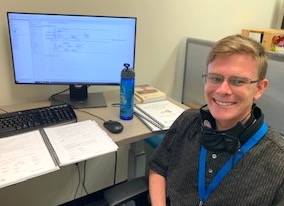
Nicholas Barrick was born and raised on the Big Island of Hawaii. He graduated from Hawaii Preparatory Academy in 2021 and has just finished his first year of college at Embry-Riddle Aeronautical University. In the past year, he was involved in the American Institute of Aeronautics and Astronautics’ Design Build Fly competition, where he assisted in the design, construction, and flight of a UAS designed to complete a mission set out by the AIAA. After finishing his bachelor’s he hopes to go directly into industry, to continue his learning, and to continue building the field of aerospace. His hobbies include flying RC aircraft and video games.
Home Island: Big Island of Hawaii
High School: Hawaii Preparatory Academy
Institution when accepted: Embry-Riddle Aeronautical University
Akamai Project: Model Based Systems Engineering to Describe a Telescope
Project Site: KBR, Kihei HI
Mentor: Laura Ulibarri and Danny Topp
Project Abstract:
Model Based Systems Engineering(MBSE) is a new approach in the field that seeks to address and improve upon the existing concepts of systems engineering. In MBSE, systems are broken into a number of representations, usually components, behaviors, requirements, and use cases. The aim of this project is to construct a digital model of a satellite tracking telescope utilizing the concepts of MBSE. This project utilizes the software Cameo Systems Modeler to construct the representations of the system. In order to complete this project, the system is broken up into individual components. The system is also assigned actions and behaviors. The interactions between components and behaviors within the model describe the system’s function. The expected end result of this project will be a model that can accurately describe the components, behaviors, and constraints of the system. This model will ideally also have some capability to simulate how data will flow through the system, from the initial inputs to form a full tracking solution. The end goal is that the model created for this project can be used to provide a framework or stepping off point of KBR Maui’s future construction projects. As of now, the model consists of three packages consisting of structure, behavior, and requirements. The structure package involves representations of the physical and software components of the system. The behavior package represents the actions and interfaces the system will make. The requirements package describes the physical constraints and necessary actions for the system to take. As of yet, this system does not have any simulation capabilities, but I am hopeful that this capability can be easily integrated by a future intern.